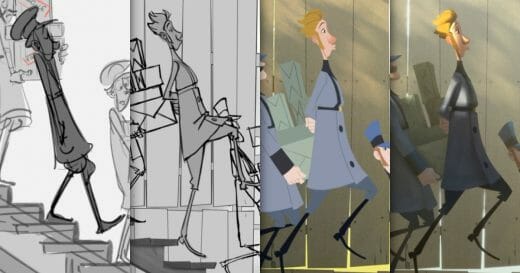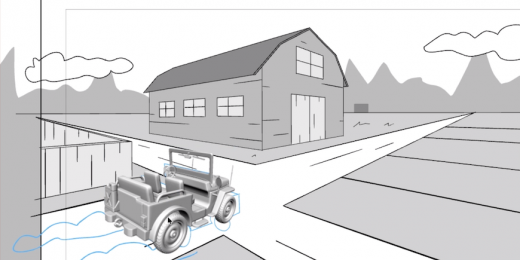
In the short film Pizzèle, we meet a young cook in a pizzeria. She appears bored at first, that is, until an order for a pizza comes along.
From planning and design to animation and compositing, every aspect of Pizzèle’s production was accomplished by Aizel Panopio. Aizel created Pizzèle as her thesis film, the final assignment from a three-year animation program at Cégep du Vieux Montréal. This animation program is among the most prestigious and accessible animation courses in Canada, and it covers every aspect of the production pipeline.
We caught up with Aizel to learn about her experience in the animation program, the inspiration behind her film, and the process that went into making Pizzèle.
Pizzèle is the thesis film for your animation program at Cégep du Vieux Montréal. What prompted you to join the program, and what has your experience in it been like?
Aizel: Back in 2019, I saw the work of that year’s graduates at the Cégep du Vieux-Montreal gala. It sparked an interest in me. At the time, I felt like I had hit a plateau in terms of the art I was making. I’ve always loved to draw, but there is something magical about animation. Seeing your drawings come to life is a feeling like no other.
I decided to take on a new challenge and enrolled in the program. It ended up being such an amazing experience; not only did I grow as an artist, but I had the chance to become part of a community of artists. We all worked as a team on improving ourselves, and each other. The program helped me grow not just as an artist, but as a person.
Tell us what your film, Pizzèle, is about, and what inspired the story?
Aizel: Pizzèle is about a young cook at a pizzeria. She is bored at work – until she gets an order. She then proceeds to make a pizza with extreme enthusiasm. The idea came from daydreaming at the part-time job I had while I was in the program.
I thought about how time passes by quickly when you’re busy having fun, and doing something challenging. I wanted the pizza-making to convey that. Not everything has to be as exciting as the pizza-making you see in my film, but I really did want to show how it’s possible to make fun and excitement out of any situation.
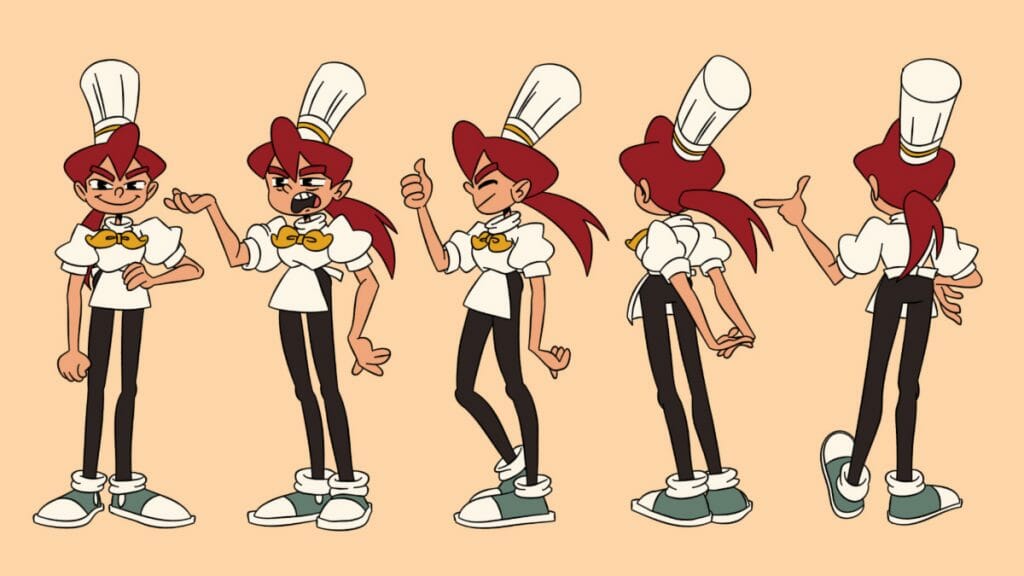
What was the most exciting part of the filmmaking process for your short?
Aizel: The whole process was such an adventure! However, if I had to pick, I would say that the visual development of the film was the most memorable part. From brainstorming, research, thumbnails to having the first few passes of the visuals made the whole project more concrete, which was so thrilling.
I started with nothing but a vague idea, and at the end of that development process I had created a character and a scene. Even though the designs changed quite a bit once I entered the pre-production phase, it was nice to see the progress I made.
What was the most challenging part of making the film, and how did you overcome that challenge?
Aizel: Storyboarding, without a doubt. I came in wanting to include so many scenes in my film, and it was difficult to put them together cohesively while sticking to the 30-second cap on the length of the film. But, with the help of my teacher and my peers, I was able to take it down a notch and make something I’m super satisfied with.
Thumbnails and writing notes down helped with this process, big time! Having my thoughts written or drawn down helped to detangle all the ideas in my head. I really like thumbnails because they’re small and quick, so you don’t have to be too precious with them.
Looking back, I would have wanted some scenes to be different than how they ultimately turned out. But I am happy with what I learned, and the lessons I took away from the process.
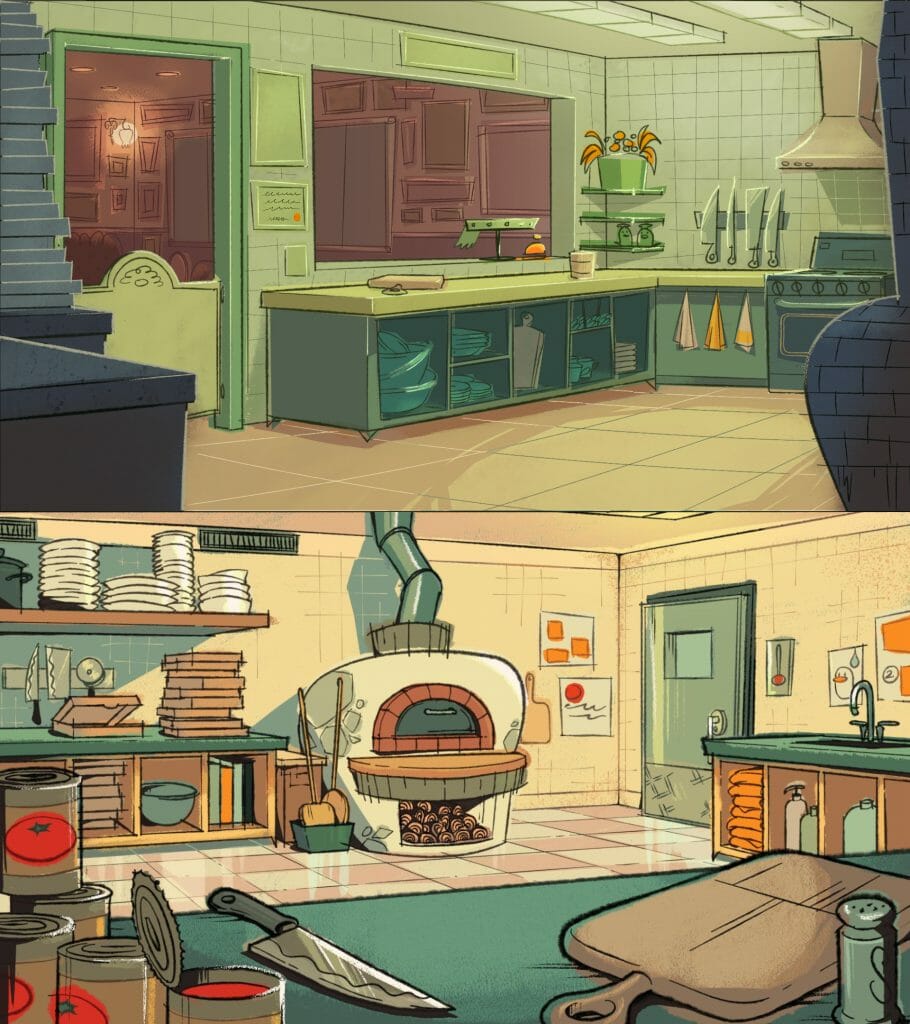
Pizzèle’s aesthetic is really beautiful. What was your inspiration for this look?
Aizel: Thank you so much! I’m glad you think so. I was mainly inspired by the background designs in the new Mickey Mouse shorts that were released a couple of years ago. The added textures made it look gritty, but also fun and fresh.
As for the film’s character, I was very much inspired by the look of old Disney cartoons, as well as the dynamism of the Looney Tunes. Through my film, I wanted to put my own spin on these classics while keeping it contemporary.
What animation techniques did you use to achieve this look?
Aizel: I tried to add as many stretches and smears to the animation as I could! To keep up with the character’s dynamic actions, I would animate faster actions on 1s and exaggerate the smears to make the timing a bit more snappy. The character’s “stretchy” expressions helped sell the look too.

What was your favourite or most helpful feature in using Harmony to make Pizzèle?
Aizel: The node view is the best thing that’s ever happened to me! Jokes aside, I think the ability to put pegs on your drawings to transform them without having to compromise the drawing itself is such a great asset. It was especially helpful for compositing; it really streamlined the whole process for me.
I like to play around with colours a lot, so having transformations and nodes applied to a peg rather than the actual drawing was a godsend!
Do you have any advice for up-and-coming animators that are working on their student films?
Aizel: I think the most important thing is to never lose sight of your goals and to remember why you’re doing all this in the first place. It’s a tough project to make your own film. There will be times when you’ll feel discouraged but remind yourself to keep going! There’s a light at the end of the tunnel (and no, it’s not an incoming train).
That being said, it’s important to be open to feedback. Even if it seems like it’s coming from left field, your peers and teachers want what’s best for you and your project. Listen, keep an open mind, and do what you can. Remember to take breaks, too!
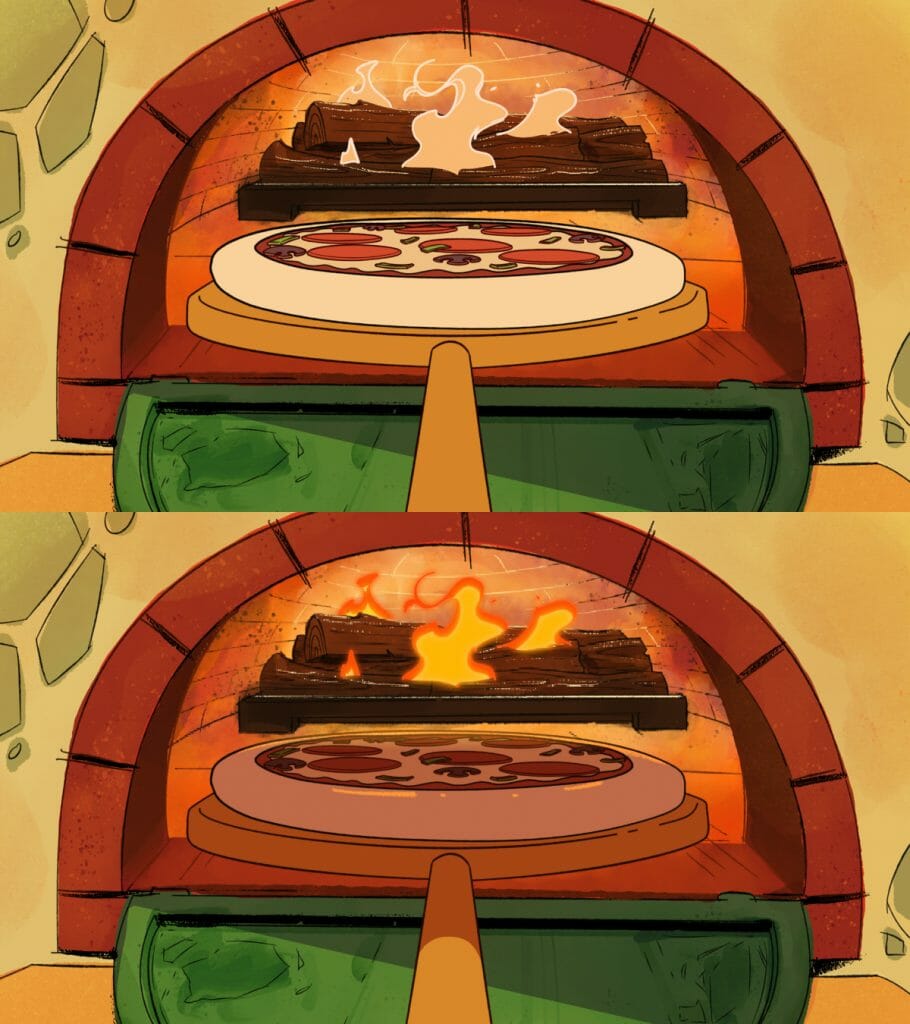
What’s next for you in animation?
Aizel: I’m looking into breaking into the industry. My favourite things to do in the pipeline are visual development, designs (whether it be characters, backgrounds, or props), animation, and compositing. It’s quite a long list but I honestly enjoyed every part of the filmmaking process. For now I’m working on personal projects to further enrich my skills and make me a better artist!
- Looking for another slice? You can see more of Aizel’s work on Instagram.
- Interested in using Harmony for your thesis film? Students can qualify for up to 84% off Toon Boom Animation’s software.


